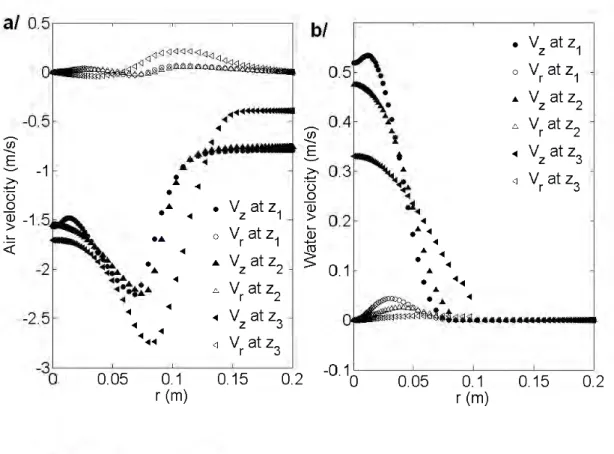Liquid dispersion in packed columns: experiments and numerical modelling
Texte intégral
Figure

![Figure 1: Liquid hold-up maps for 2 runs with air and water in Mellapak 250.X, qL=I6 m 3 /m 2 h, al case A: F s=0.74Pa 0·5, b/ case B: F s=2.21Pa 0·5• (Positions from left to right: Z], z 2, z 3 & z 4)](https://thumb-eu.123doks.com/thumbv2/123doknet/3565120.104460/34.892.120.748.164.569/figure-liquid-water-mellapak-case-case-positions-right.webp)


Documents relatifs
[r]
This test method establishes a procedure for laboratory tests to determine the minimum ignition energy of a dust cloud. The experimental data obtained with this data assess the
The scheme uses linear maximum-entropy basis functions for field variables approximation and is built variationally on a two-field potential energy functional wherein the shear
(2009) used a different madel for capillary dispersion. They wrote in the momentum equation of the liquid phase: ft. Careful discussion of the modeling of this capillary
The whole model is shown to exactly preserve the motionless steady states, thanks to the pre-balanced reformulation of the surface gradient term and suitable interface fluxes, and
Indeed, the results show a drastic change in the anisotropy factor: big droplets seem to keep the same fluctuating energy from the liquid core, but a high velocity as well; as the
After introducing this in the CFD code, turbulence phenomena in the domain is model using a LES approach to capture the large scale effect and obtain the unsteady characteristics
To estimate the concentration of microorganisms in these areas, a specific module has been developed within the lagrangian dispersion model Micro Swift Spray

